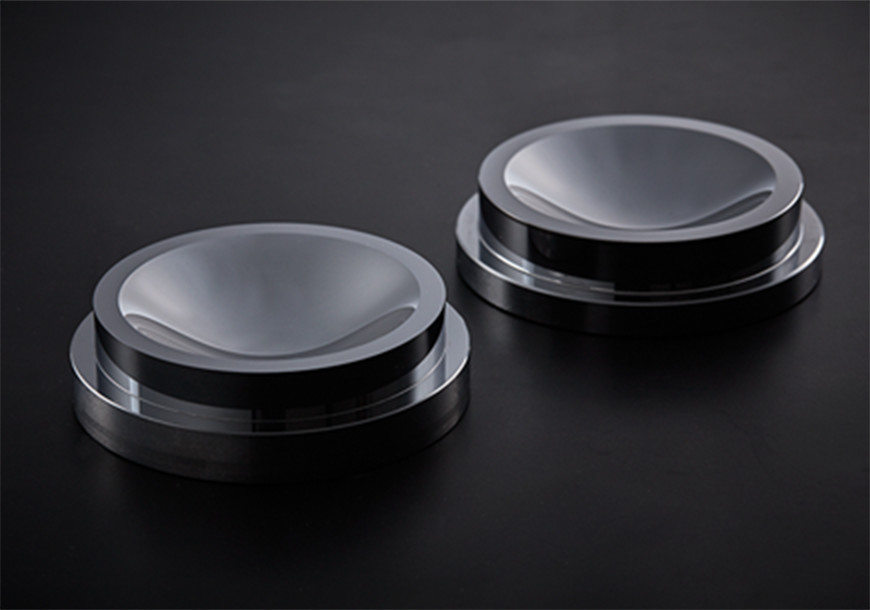Large-Aperture XGM, A Critical Path for High Performance
An aspherical lens element is a critical technology to bring multiple benefits for optical engineers as well as for users. Not only minimizing geometric distortion and/or spherical aberration, it also enables the ability to attain higher resolution while making the overall mechanical dimensions smaller. Grinding process to produce an aspherical element is a costly proposition and is not suited for volume production. Molding process, with sophisticated tooling and thermal management, has made it feasible to bring the cost to an economical level when produced in volume. Tamron’s XGM (eXpanded Glass Molded Aspherical) is a nomenclature of the breakthrough technology which yields aspheres of larger apertures exceeding 55mm in diameter. Fast aperture of F/2.8 and distinguishably high resolution across the field are harmonized by virtue of deploying the XGM element while keeping the overall form factor to the smallest possible without compromising any performance criteria.
XGM, Demonstrating Tamron Proprietary Know-How
“Molding” generally refers to a shaping process with a tooling with a work heated over a transformation temperature. A glass substrate is heated to a high temperature of 600 to 700°C, pressed in shape with a tooling, then cooled down to approx. 500°C. In the case of an XGM element, due to its significantly larger diameter and mass volume, duration for the total process cycle is several times longer, which could cause a higher yield loss. Addressing all sorts of variables that could negatively impact the yield, Tamron successfully developed a highly efficient process technology for XGM production based on massive data as collected through trial and error experiments as well as theoretical analysis. Quite a few facets of manufacturing know-how are involved as a proprietary technology.

Redundant Trial-and-Error Attempts for Perfection
Conventional molding apparatus can merely produce aspherical elements of conventional specs and properties. Customization of the machinery thus becomes inevitable in order to deliver an aspherical element as intended in terms of its integrity in profile and surface quality. Naturally, system management of the machine needs to be finely-tuned to provide the critical parameters to boast the optimal results. Because of the integrated control over the hardware and the software, it becomes feasible to address issues of all kinds in-house, which ranges from optimization of the molding machine itself to modification of the management software, to manufacture the critical component in an ideal form.
Coordinated Team Efforts between Design, Process Technology and Volume Ramp-up
A technology, how innovative it might be, does not reach end-users unless it is properly adapted for the production environment. Delivering a lens that would not have shaped a form without the unique expertise of Tamron is a pride and joy. Especially, when a totally new process technology such as XGM is to be introduced, highly coordinated joint efforts must come into play between teams engaged in design, process technology and production administration. At times, it could entail modifying an original optical design for the purpose of achieving better production efficiency with enhanced quality.
High-Precision Coating for XGM
Coating process, which is the final stage of a lens element production flow, either for anti-reflection or surface protection must be executed with utmost care to prevent inducing particles, smear, blemishes, scratches and any other foreign materials. In case of an XGM element, because of its inherently unique properties, any coating defect unavoidably results in a total loss with no rework process allowed. Therefore, extremely meticulous quality management is implemented throughout the work process from pre-coating preparations, which includes cancellation of static electricity, deionization and visual inspection by specially-trained staff, to line-out inspection after coating. Team efforts play a pivotal role to achieve the highest level of quality control and the production efficiency.
Proprietary Technologies for Higher Product Perfection
Accelerated migration of digital cameras toward higher pixel density models also mandates distinctive performance enhancement on interchangeable lenses. Tamron successfully featured its proprietary VC (Vibration Compensation) function on an F/2.8 fast aperture 15-30mm ultra wide-angle zoom (#A012) first in the world, validating the efficiency of the image stabilization system even for lenses in the ultra wide-angle category. Achieving an overall compactness of the chassis by deploying an XGM element on one hand, and integrating a custom-tuned VC module on the other, core technologies of Tamron are nicely blended to bring the maximum benefit to end customers.
New Vista Toward Further Advancement in Optics
Tamron’s XGM is a state-of-the-art technology that enabled production of large aperture glass aspherical elements of over 55mm diameter by molding process. By maturing the technology, manufacturing of a lens model was made possible which only existed in the virtual domain standing still in the form of a conceptual design. SP 15-30mm (#A012) proved a prominent case in point. A drive to commercialize a lens unit constructed in a distinguishably sophisticated design stimulates innovation in process technologies, which in turn opens up a new opportunity to create further advanced lenses.



